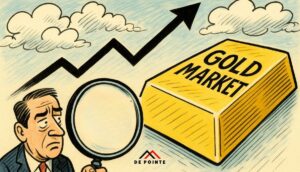Article

In the realm of investment, two distinct worlds stand out: the art market and the fine wine market. Both offer alluring prospects, each with its unique set of advantages and challenges. In this comprehensive guide, we delve into the nuances of these investment avenues, exploring the historical growth, cultural significance, liquidity, diversification potential, market accessibility, and more. Whether you’re an art enthusiast or a wine connoisseur, read on to make an informed choice that aligns with your financial goals.
Art Market: Cultivating Enduring Value
Vast Growth Potential: The art market presents a world of cultivated value, where original artworks crafted by renowned artists have consistently exhibited remarkable appreciation over time. These creations serve as more than just visually captivating pieces; they are powerful vehicles for substantial financial growth. Investing in the art market promises not only the ownership of exquisite masterpieces but also the potential for significant wealth accumulation.
Cultural Legacy and Connection: Stepping into the art market opens the doors to a profound cultural legacy and a unique human connection. Artworks transcend their physical form to become gateways to historical and societal narratives. By investing in the art market, you not only stand to benefit financially but also form an intimate link to the rich tapestry of human culture and history.
Exclusivity and Resilient Stability: Exclusivity and resilient stability define the art market’s allure. While liquidity might be relatively constrained, this very exclusivity ensures the preservation of scarcity and the value of artworks. This aura of exclusiveness serves as a hallmark of the art market, promising steadfastness and enduring returns.
Portfolio Enrichment and Diversification: Art investment adds a unique brushstroke to portfolio enrichment. Artworks, as intrinsically valuable assets, provide a pathway for diversification beyond conventional financial instruments. They act as a shield against market fluctuations and inflation, offering a strategic enhancement to comprehensive portfolio management.
Digital Access to Treasures: Advancements in technology have revolutionized the art market’s accessibility. Online platforms have dismantled barriers, granting enthusiasts and investors convenient access to priceless masterpieces. This democratization of access extends a compelling invitation to a wider and more diverse audience.
Time-Honored Appreciation: The art market is marked by its time-honored tradition of appreciation. Artworks, carrying the legacy of generations, have consistently appreciated over long periods. This trajectory of enduring value underscores the art market’s role as a sanctuary for long-term investment and value preservation.
Unparalleled Uniqueness and Rarity: Artworks embody unparalleled uniqueness and scarcity, elevating them to the status of coveted treasures. Each creation represents a one-of-a-kind expression, fuelling high demand and spirited competition. This rarity-driven dynamic serves as a cornerstone of the art market’s potential for extraordinary growth and lasting value.
Active Sales Demand and Flexibility: The art market thrives on a vibrant sales environment, offering both high sales volume and exceptional flexibility in resale. The robust demand for artworks, coupled with the ease of reselling, amplifies the marketability and liquidity of art investments, providing investors with desired freedom and control.
Fine Wine Market: Navigating Singular Realms
Measured Returns: The fine wine market beckons as a distinct realm of investment, offering its own array of opportunities. While it may lack the meteoric rise witnessed in the art market, it provides an avenue for value accumulation that stands on its own merits.
Elegance with Sensory Appeal: Fine wines personify elegance and refinement, inviting enthusiasts into a realm of sensory delight. However, this allure may not weave the same deep cultural legacy and historical connection that artworks offer. While fine wines tantalize the senses, investing in them may entail a different kind of experience.
Delicate Liquidity Landscape: Fine wines possess their own unique charm, yet their liquidity can be delicate, sensitive to the ebb and flow of market dynamics. This liquidity profile sets the stage for a more intricate investment landscape compared to the art market’s exclusive embrace and stability.
Limited Diversification Scope: While fine wines carry a distinctive allure, their potential for portfolio diversification may be relatively limited. This aspect contrasts with the comprehensive portfolio enhancement offered by art investment, emphasizing the specific role that fine wines play in the context of investment strategies.
Gradual Accessibility Progress: The journey toward accessibility within the fine wine market has been gradual, with steps taken to expand its reach. While strides have been made, the journey toward democratization has yet to match the dynamic online platforms of the art market, indicating a slower evolution in terms of investor accessibility.
Influence of Changing Dynamics: The fine wine market’s value trajectory may be influenced by factors such as changing consumer preferences and market dynamics. This unique narrative contrasts with the art market’s established legacy of enduring appreciation and value accumulation.
Distinct Identity and Scarcity: Fine wines tell their own story through vintage variation, a testament to their distinct identity and limited supply. However, this narrative may not rival the unparalleled uniqueness and scarcity that characterize original artworks in the art market.
Resale Complexity: Navigating the resale landscape within the fine wine market can prove intricate, with inherent complexities adding layers of consideration. In contrast, the art market
Trust De Pointe to guide you through the complexities of the alternative investment market. Subscribe today to learn more about our services and how we can help you achieve your investment objectives.





